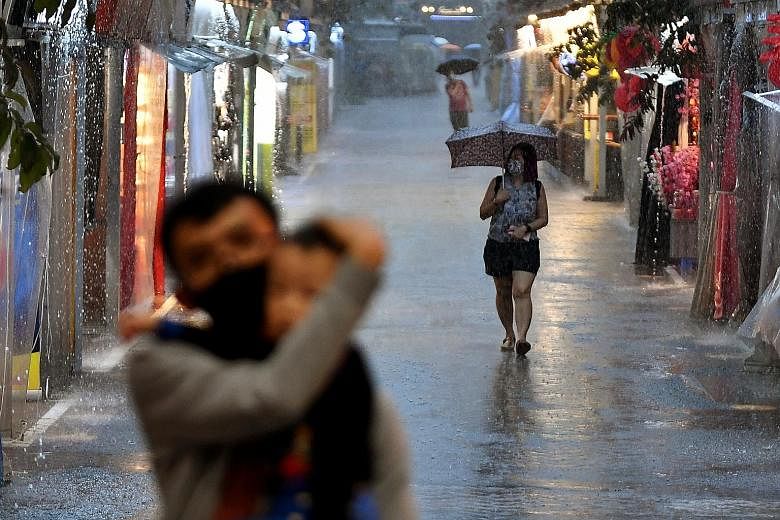Singapore's weather was surprising in a number of ways last year, exhibiting temperature trends that differed slightly from those observed globally, according to findings released yesterday by the National Environment Agency's Meteorological Service Singapore.
The first five months of last year were warmer than average, but this was reversed in the second half of the year - particularly in June and September - with cooler-than-average temperatures recorded over the island.
And even though last year was marked by an unseasonably wet south-west monsoon season, it was still the eighth-warmest year on record, with an annual mean temperature of 28 deg C - half a degree above the long-term average.
Last year also saw the continuation of warmer-than-average mean temperatures in the island. This started in February 2018 and came to an end last June - a record 28 consecutive months.
These findings released yesterday indicate that Singapore's climate trends last year differed slightly from those reported internationally by the World Meteorological Organisation in the latest State of the Global Climate 2020 report.
At the global level, last year was one of the three warmest years on record, with the last decade (2011-2020) also being the warmest decade recorded.
In Singapore, rainfall was below the long-term annual average, but the island also had more frequent and intense heavy rain, particularly in the second half of the year.
While the south-west monsoon season (June to September) is normally the drier time of the year, those months were also unseasonably wet for Singapore and the surrounding region, due in part to La Nina conditions that developed in the third quarter of last year.
This resulted in Singapore's rainfall for June to September being 30 per cent above the long-term average from 1981 to 2010.
Several other notable weather events occurred last year.
June saw total rainfall of 233.8mm - the wettest in the last decade for the month.
The Changi climate station recorded 21 days of rain in the month, the most in the last 30 years, with particularly heavy rain on June 23, which resulted in flash floods in Bedok and Jurong.
In October, the island experienced high frequency of Sumatra squalls, an organised line of thunderstorms that brought heavy rain and gusty winds. A total of 14 Sumatra squalls passed through Singapore that month alone, the most in a decade. This could be partly attributed to tropical cyclones over the South China Sea and the western Pacific Ocean.
In total, around 50 Sumatra squalls crossed over Singapore last year, one of which resulted in the temperature dropping to 20.9 deg C in Newton on Sept 16, making that day the coolest of the year.
On average, Singapore experiences 45 Sumatra squalls annually, with most occurring between April and November.




